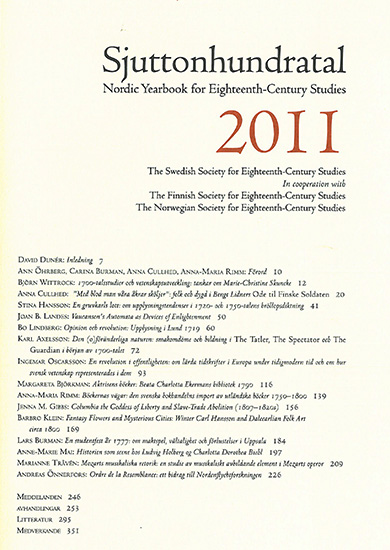Böckernas vägar: den svenska bokhandelns import av utländska böcker 1750–1800
DOI:
https://doi.org/10.7557/4.2398Keywords:
book history, book trade, Swedish booksellersAbstract
This study focuses on the import of books to Sweden between 1750 and 1800. The Swedish book trade in the eighteenth century involved mainly foreign books. The publication of books in Swedish was still limited - despite increasing steadily during the century - and was in no way able to satisfy the needs of Swedish scholars for learned and diverting works in their original language. The import of foreign books to Sweden seems to have been undertaken in various ways: with the help of individuals who brought books home with them from abroad, through the universities' exchange of scholarly works with institutions overseas, and by means of the organized book trade. Several Swedish book sellers imported books from abroad during the latter part of the eighteenth century. In fact, Sweden had a substantial number of book shops compared with other European cities. In the 1781 European bookseller's directory, the Almanach de la librairie, Stockholm shared fifth place (with The Hague) in a ranking of European cities with the largest number of book shops, placing higher than cities such as Berlin, Amsterdam, Madrid, and Rome. Importing books to Sweden was, however, a financially risky business and some of the importers went bankrupt because of it. The conditions of the trade also underwent marked developments during the period studied: originally, for example, imports largely took the form of exchanges. In conclusion, the article shows that more basic research and comprehensive empirical studies need to be undertaken to provide a fair picture of this hitherto largely unresearched trade.









